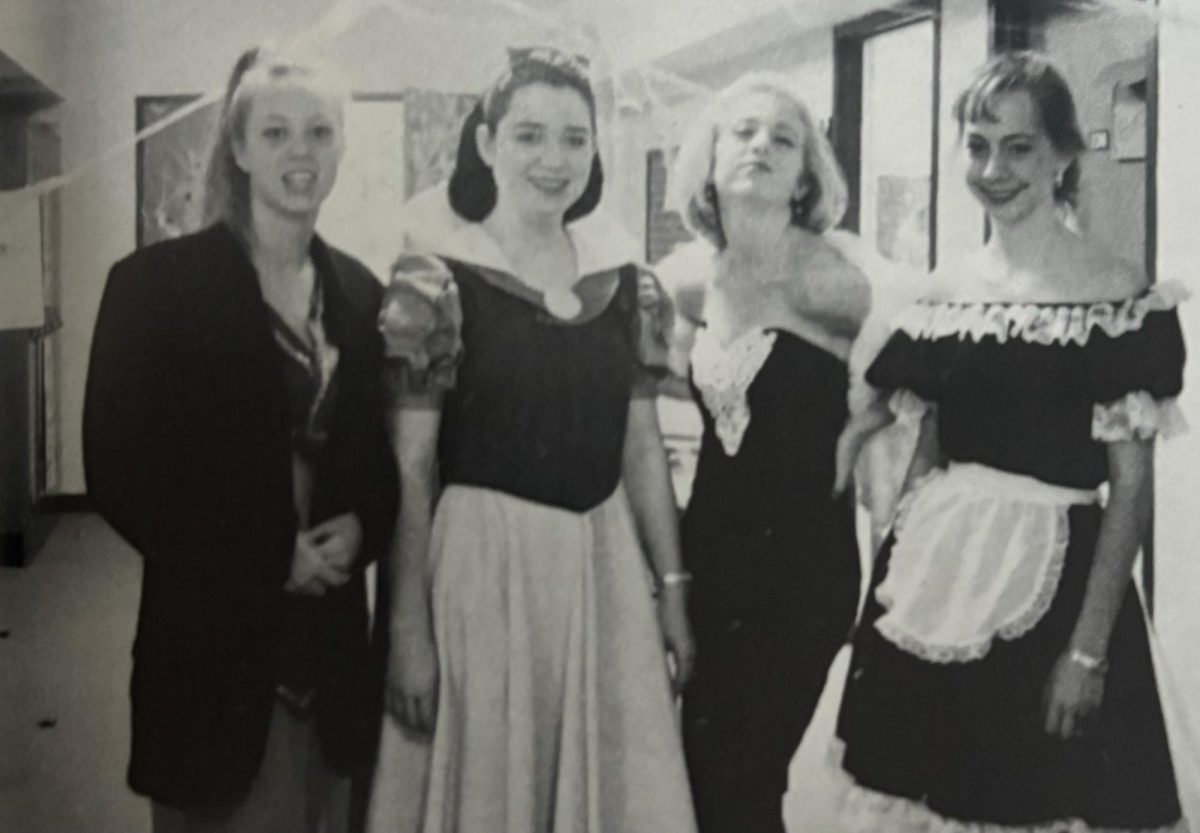It begins in childhood, as we grasp in our chubby hands that alluring amalgam of garlic, red goop and greasy cheese on bread.
It comforts us through adolescence, offering social respite to those unfortunate victims of the Middle School mixers.
As it rings our doorbell on a lonely Friday night, it is, as one might say, the kind of friend we’ve all wished for. Not only does it visit when we call, but it feeds us when we’re hungry, it brightens our day, it even breaks the ice at a stagnant party. And in return, it asks for nothing but a few meager pounds under the belt.
My deepest admiration lies in the floury, dough-caked hands of one man: that guy in Naples who created the pizza. This man had the culinary prowess to combine every food group into one scrumptious, portable, affordable and aesthetically delightful meal.
Now, years after “the invention that solidified Italy’s greatness in cuisine,” as described by sophomore Grace, the Americanized version (i.e. the more obese version) of the pizza is a popular staple in the average American diet.
At Hockaday, we recognize that pizza provides a superior dining experience. Why else would it pop up at advisory lunches, birthday parties, discussion forums, bake sales and fundraisers, monotony breakers or whenever the cafeteria is serving fish?
“Pizza really does entice me to attend events I normally wouldn’t,” senior Erin said. “I love eating pizza at school, and I love having such easy access to it.”
Indeed, pizza is, as junior Adela describes, “the calling card of every meeting, forum, et cetera.”
I love pizza as much as the next Hockaday student, but it wasn’t long before I began to wonder how this one food had come to play such a huge role in our school, how it had mysteriously become the primary supplier of my daily calorie intake.
The answer, I think, begins far outside of Hockaday. As a culture, we adore pizza. We adore it so much that our Congress (under the gentle guidance of lobbyists associated with the American Frozen Food Institute), despite initial opposition from the U.S. Department of Agriculture, managed to promote it to vegetable status, based on the nutritional value of tomato paste, so that more of it could be served in schools in place of that nasty green stuff.
And let’s face it: who’s going to complain?
“I think we definitely eat too much of it,” junior Christina said, “but I also don’t think that’s a problem because it’s so good. It’s so unhealthy but so worth it.”
While rarely on Hockaday’s cafeteria menu, pizza comprises a disproportionately large slice of the average Hockaday student’s diet. Even on the rare occasion that it’s not being offered somewhere on campus, many girls eagerly seize the opportunity to order delivery.
That way, instead of being forced to attend the pre-paid, gourmet buffet down the hall, girls can dish out $20 to wait in Hoak Portico for some guy to arrive 30 minutes late with a disappointingly sized pizza (the same kind you probably had for dinner two nights ago). Of this, girls may even be lucky enough to receive a moderately satisfying portion, while they sit in isolation from all but a choice few of their classmates.
Even under such circumstances, many girls eagerly await their next “pizza party.”
“I feel that pizza is something that we all enjoy, no matter what, and we always look forward to,” freshman Aparna said. “It is satisfactory any time of day, and I can’t get enough of it.”
The sheer volume of responses similar to this one that I received from the Hockaday student body inspired me to seriously reconsider my relationship with pizza. What I had shrugged off before as a common tendency began to look more and more like an addiction—a cultural dependence—that came with genuinely unhealthy consequences.
According to a recent study by the USDA, average rates of cheese consumption in America have nearly tripled between 1970 and 2003. The study went on to show that, by 2003, consumption of mozzarella—the primary cheese in pizza—had increased to nearly 9 times its 1970 levels. Furthermore, according to the U.S. Dairy Export Council, Americans consume a staggering 175 acres of pizza every day.
At a school like Hockaday, where we have such an abundance of nutritious options at our fingertips, why do we continue to exploit the pizza? While I do not advocate the eradication of this classic meal, I do strongly encourage an assessment of possible alternatives.
I have a hunch this country would look a whole lot different if children were brought up on slices of quiche and sticks of celery, rather than the ubiquitous pizza and buttery breadsticks.
– Annabel




